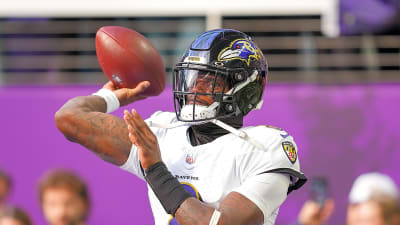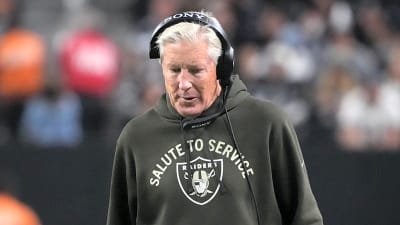Spooky in wrestling has always been a fine line to walk, and criticisms can range from ‘they didn’t go far enough’ to ‘that was way too far.’ With it being Halloween, FightsATW has decided to pay tribute to the three most impactful events, matches, or wrestlers in the history of spooky as we celebrate the scariest bookings in squared circle (pentagram?) history.
HALLOWEEN HAVOC 1992—PHILADELPHIA, PENNSYLVANIA (PHILADELPHIA CIVIC CENTER)
From the frightening opening with early nineties graphics of a haunted house and Sting howling at the moon to the musical score that was a rock reimagining of the classic “Goosebumps” theme song, this event, in its fourth installment, captured the entire era’s idea of ‘spooky.’ This was an era on the brink of The Undertaker and all his terrifically spooky lore, but at this point in the nineties, the goofy Saturday morning cartoon gimmick had seeped into the unnerving reality created by characters like Abdula the Butcher or Kamala in the seventies and eighties.
“Spin the wheel, make the deal,” was the event’s tagline, introduced by a young Tony Schiavone and, with a face like a Halloween mask, Bruno Sammartino. It’s common for a main event to feature a single gimmick like Hell in the Cell or WarGames, but the main event that night between Jake “The Snake” Roberts and Sting (Surfer, not Crow) had twelve potential gimmick matches. Sting-Roberts was fought under “Lights Out” rules, meaning it was a kayfabe unsanctioned match, and the match’s specific rules were determined by a spinning wheel with the following gimmicks. Texas Bull Rope
- Spinner’s Choice
- Russian Chain Match
- Dog Collar Match
- “I Quit” Match
- Barbed Wire
- Cage Match
- Lumber Jack w/belts
- Prince of Darkness
- Texas Death Match
- Coal Miners Glove
- First Blood
Seventeen years before Jim Ross would share a broadcast team with Schiavone for AEW, the two were paired separately, and Ross worked ringside duties alongside Jessie Venture. The three-man crew explained, as Sting took his turn spinning the wheel that spun for too long, that 98 minutes into the PPV we learned the main event would be a “Coal Miner’s Glove” match—a contest with a ‘steel encased’ coal miner’s glove perched atop a pole for the climber to use once acquired.
Sting retrieved the glove and belted Roberts while pulling his snake from his trusty sack after Cactus Jack threw him the ‘snake handler’s glove. The finish saw Jake bitten by his own snake as Sting hooked the leg for the 3-count. The scariest part of this match was that the wheel was not gimmicked, and Jake was forced to sit in the back with panic as he thought about how he’d even ‘slither’ up the pole. He later said he would have preferred the cage match (“The Snake Pit”), even though he claimed the snake bite didn’t hurt—so much so that Jake no-sold the post-match for a second to check on the snake.
UNDERTAKER vs. MANKIND (HELL IN THE CELL, BOILERROOM BRAWL AND BURIED ALIVE)
Corresponding Order:
- King of the Ring 1998: Pittsburgh, Pennsylvania—Pittsburgh Civic Arena
- SummerSlam 1996: Cleveland, Ohio—Gund Arena
- In Your House, Buried Alive 1996: Indianapolis, Indiana—Market Square Arena
This might be cheating, but it aims to honor the long-standing feud between The Undertaker and Mankind/Mick Foley. These two battled each other through some of the most innovative matches of their era. This rivalry laid the foundation for the future of the sport, but more importantly, they showcased ‘spooky’ at its highest level in some of the most compelling narratives of the time.
The ’Hell in the Cell’ match wasn’t the first time the gimmick was used, but it set the bar for every match afterward as Foley defied the odds of walking out of the arena after being thrown off the cage and then through the cage.
In the Boiler Room Brawl, they paved the way for ‘off-site’ wrestling matches and inspired new game modes in WWF video games. The match remains brutal even years later, and it’s often overlooked, but respect is earned with every re-watch. Notably, this was the event where Paul Bearer turned on Taker.
The Buried Alive Match showcased the depths of Taker’s mystical powers, and although it was not the first time he used electricity/lightning (that honor goes to the Yokozuna-Taker Casket Match at the ’93 Rumble), Taker won the match. However, all anyone remembers is Mankind, with help from Paul Bearer, The Executioner, and half the heel roster, burying The Undertaker. He then used thunder to scare off the heels as his purple-gloved hand broke through the dirt and rose from his grave. This was the last of the ‘purple Taker,’ and he soon returned as his darkest incarnation ever—The Ministry of Darkness.
THE UNDERTAKER vs. AJ STYLES—BONEYARD MATCH/BRAY WYATT vs. JOHN CENA (THE CINEMATIC UNIVERSE)
It’s fun to explore all the cheesy, campy, and sometimes terrible ‘spooky wrestling’ of past decades, but the modern era uses contemporary tools. The students who grew up watching Papa Shango, Kane, Boogeyman, Kevin Sullivan, and many others have become artists of their own—this is how we get the creative genius Windham Lawrence Rotunda (better known as Bray/The Fiend).
The Fiend character transcended wrestling during a time when it needed artistic innovation. His ‘Firefly Funhouse’ paved the way for cinematic matches, and when COVID struck and wrestling could no longer take place in large stadiums, Bray Wyatt aimed to push the boundaries of what was achievable in wrestling.
It was not the “Mania moment” you dreamed of as a kid, but rather a nightmare from childhood where John Cena resembled Hulk Hogan (scary, I know). The match threw John Cena into a parallel world where he faced the biggest ‘non-decision’ of his career—turning heel. The visuals were perfect, and the dramatic nature of the match was captivating enough to make you forget they weren’t in a wrestling ring.
This booking paved the way for The Undertaker’s WrestleMania return—made possible by the cinematic match. It was also perfect as The Undertaker’s lore played out with AJ Styles as the ideal straight-man in the segment alongside his ‘Good Brothers.’
The need for cinematic matches has diminished for now, but segments on RAW and SmackDown have used these cinematic elements to create more impactful moments that helped superstars like Bronson Reed and Braun Strowman gain popularity, to name a few. The wrestling world will always be grateful to Bray Wyatt, as his legacy lives on through the ‘best spooky’ today: The Wyatt Sicks.
More must-reads:
- Florida Panthers center Eetu Luostarinen suffers freak injury in 'barbecue accident'
- Mavericks' Mark Cuban sends strong message on Anthony Davis, but he should change his tune
- The 'NFL single-game completions leaders' quiz
Breaking News
Trending News
Customize Your Newsletter
 +
+
Get the latest news and rumors, customized to your favorite sports and teams. Emailed daily. Always free!








